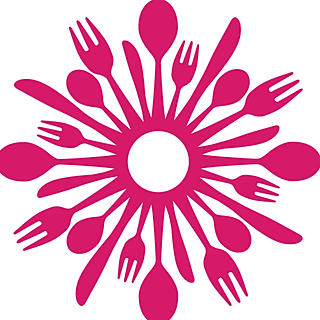The Art of Slow Cooking: Benefits and Traditional Recipes
- Chef Yerika
- Jan 20
- 4 min read

Slow cooking is one of the oldest and most appreciated culinary techniques in various gastronomic cultures worldwide. Throughout history, this method has been valued not only for its ability to extract maximum flavor from ingredients but also for improving food texture and preserving essential nutrients.
In this article, we will explore the origins of slow cooking, its benefits, the ideal utensils for its application, and some iconic recipes that have stood the test of time.
History and Evolution of Slow Cooking
Since the earliest civilizations, slow cooking has been an essential practice in food preparation. Ancient cultures discovered that cooking over low heat for a long time allowed tough meats to soften and develop deeper flavors in soups and stews.
Slow Cooking in Pre-Columbian Times
In Mesoamerica, before the arrival of Europeans, slow cooking was a common practice among various cultures such as the Mexica, Maya, and Zapotec. They used comales, pib (earth ovens), and clay pots to cook native ingredients such as corn, beans, chili, and venison or turkey. Tamales, steamed for hours, and thick stews like atole reflect the importance of this method in their cuisine.
The pib, a technique used by the Maya, involved digging a hole in the ground, lighting embers, and burying food wrapped in banana or maguey leaves, allowing for uniform and slow cooking. This method still persists in dishes like cochinita pibil.
Slow Cooking in Colonial and Post-Colonial Times
With the arrival of Spanish colonizers in the 16th century, Mexican gastronomy transformed with the incorporation of ingredients such as beef, pork, wheat, and European spices. Slow cooking evolved with new techniques and utensils such as glazed clay casseroles and copper cauldrons.
Dishes like mole de olla, where meat is slowly cooked with dried chilies and spices, emerged from this culinary fusion. The process of preparing frothy broths like pozole, which requires hours of cooking to soften hominy corn and meats, was also refined.
Slow Cooking in Modern Mexican Gastronomy
Today, many of these techniques remain in use and have been adapted for contemporary kitchens. Barbacoa, originally cooked in earth ovens with maguey leaves, is now also prepared in pressure cookers or low-temperature ovens. Likewise, traditional moles, such as Oaxaca’s mole negro, still require long hours of cooking to intensify their flavors.
During the Middle Ages, iron cauldrons were common in European homes, allowing ingredients to cook for hours over gentle embers.
In Latin America, dishes like mole de olla and barbacoa have maintained this tradition, demonstrating that patience is key to achieving exceptional results. In Asia, ramen tonkotsu and Vietnamese pho rely on prolonged bone cooking to create dense broths rich in collagen.
Benefits of Slow Cooking
1. Development of Deep Flavors
Unlike fast cooking methods, low heat allows ingredients to gradually release their aromas and blend harmoniously, resulting in dishes with greater complexity of flavor.
2. Improved Texture
Tough cuts of meat, such as beef shoulder or lamb, greatly benefit from this process, as gentle heat breaks down collagen, turning them into tender and juicy pieces.
3. Nutrient Preservation
Using moderate temperatures minimizes the loss of vitamins and minerals, which often degrade with high temperatures and shorter cooking times.
4. Efficiency and Sustainability
This method reduces the need for constant supervision and allows for the use of more economical meat cuts, promoting sustainable cooking.
Key Utensils for Slow Cooking
To master this technique, it is essential to have the right tools:
Cast Iron Pots – Ideal for braising and stewing, these distribute heat evenly and maintain a constant temperature.
Slow Cookers (Crockpots) – These allow for programmed cooking time and temperature, making meal preparation effortless.
Low-Temperature Ovens – Perfect for prolonged cooking, such as duck confit or traditional Mexican barbacoa.
Examples of Traditional Slow-Cooked Dishes
1. Cochinita Pibil (Mexico)
This iconic Yucatán dish is slow-cooked for hours, allowing the pork to fall apart into tender shreds, absorbing the distinct flavor of achiote and citrus.
2. Osso Buco alla Milanese (Italy)
A classic Italian dish where veal shank is slow-cooked with white wine, tomatoes, and herbs, achieving a meltingly soft texture.
3. Ramen Tonkotsu (Japan)
The secret of this broth lies in the prolonged cooking of pork bones, which release collagen and result in a thick, deeply flavorful soup.
4. Boeuf Bourguignon (France)
A French beef stew slow-cooked with red wine, carrots, onions, and mushrooms, showcasing the sophistication of French cuisine.
Tips for Perfect Slow Cooking
Choose the Right Ingredients – Bone-in meats, legumes, and tubers are ideal, as they benefit from prolonged cooking.
Avoid Constantly Lifting the Lid – Each time the pot is opened, heat and moisture escape, unnecessarily extending the cooking time.
Use Aromatic Liquids – Wine, broths, and fresh herbs enhance flavors and add depth to dishes.
Adjust Seasoning at the End – Flavors concentrate over time, so it’s best to adjust salt and seasonings at the end of cooking.
Slow cooking is not just a culinary technique but a gastronomic philosophy that emphasizes respect for ingredients and the pleasure of cooking with patience. By adopting this method, not only is the quality of dishes improved, but it also helps preserve ancestral traditions that have defined the cuisine of different cultures.
With the right equipment and a well-thought-out selection of ingredients, anyone can enjoy the benefits of slow cooking and transform simple ingredients into true culinary masterpieces.












Comments